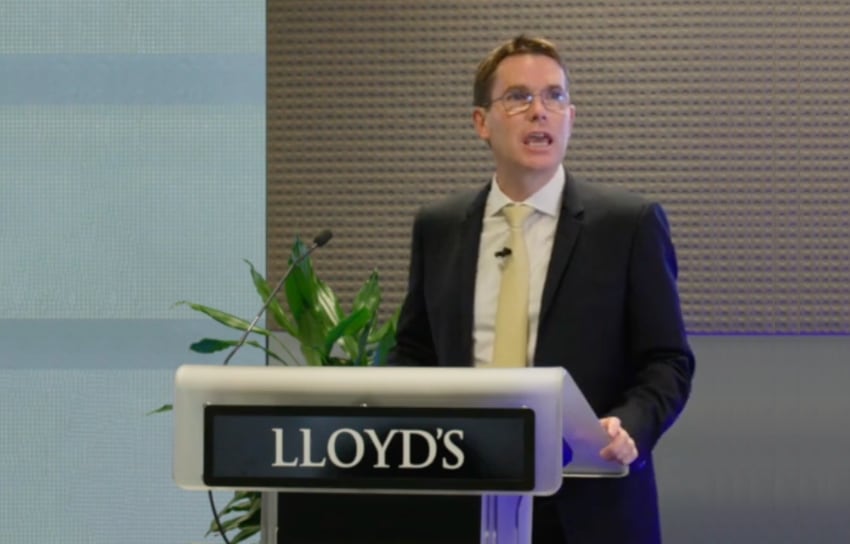The Lloyd’s insurance and reinsurance market is considering expanding its list of the five main peak perils it considers in natural catastrophe exposure management, to include some of the so-called secondary perils that now have materiality to the market almost on the same scale.
 This is according to Patrick Tiernan, Chief of Markets at Lloyd’s, who explained in the latest quarterly market update presentation that the level of losses coming through some of the catastrophe and weather perils that have been considered non-peak in the past are increasingly of concern.
This is according to Patrick Tiernan, Chief of Markets at Lloyd’s, who explained in the latest quarterly market update presentation that the level of losses coming through some of the catastrophe and weather perils that have been considered non-peak in the past are increasingly of concern.
The LCM5, is an initiative by Lloyd’s that has aimed to help participants and the market itself in managing the overall catastrophe exposure within the market across five core peak perils.
Tiernan told the assembled Lloyd’s participants and partners, “When we talk about volatility from a front-foot perspective, this is not simply a risk and capital management exercise. We think getting this right is critical, as part of any decent cycle management strategy.
“It’s also at the heart of our market development strategy, in ensuring that we can be a predictable and proactive partner for you in managing your businesses and customers. So today, I want to share our priorities on natural and man-made catastrophes to allow you to plan ahead for the implications and opportunities.
“If we start with nat cat, it feels there’s scarcely a pause these days between tragic events of human suffering in every part of our world. I know in this room our focus on insurance solutions for natural catastrophes is always superseded by our empathy with the victims, most recently in Libya and Morocco.
“When it comes to evaluating the forward-looking threat, our key message is that you need to look at the data and the science very closely so, as a market, we can stay in control and stay relevant.”
Tiernan then showed catastrophe loss data for the Lloyd’s market over time, concluding that “increases can be largely explained by exposure related factors.”
But he also added, “Let me be very clear, none of this means that climate change is not an issue. It actually means quite the opposite. Losses are already increasing and climate change is likely to amplify the increases in claims that we already see.”
He noted that climate change is extremely complex and that different regions and perils will experience different impacts.
Going on to say, “There’s a tonne of complexity and range in the impact by peril and geography,” which Tiernan said means that, for Lloyd’s market participants, “Loss ratios need to reflect both modelled past experience and the uncertainties inherent in forecasting the future claims environment.”
Continuing to explain that, “An overly simplistic approach will only cause more problems than it solves. So if you don’t invest in understanding climate change now, then by the time we see the true impact on claims, it’s going to be too late.
“If you want to maintain your high CROF (Catastrophe Risk Operational Framework) score and the planning and capital benefits that can accumulate, when that is accompanied by a plan that is achieved, we strongly encourage deliberate and early action in this space.”
Moving on to discuss the expansion of the peak catastrophe perils list, Tiernan implied this is an action the market expects to take.
“From a practical point of view, we will be acting to extend the number of peak perils in our focus,” Tiernan said.
Adding, “The LCM 5 framework clearly defines the five key peak perils to Lloyds, being US wind and quake, Japanese wind and quake and Northern European wind.
“However, there’s been a 42% increase in net modelled losses for non-peak perils at the 1-in-200 return period since 2017.
“Our data shows that some of these region perils have materiality to us, not too far off the lowest of those peak LCM5. These include US inland flood, US severe convective storm, US wildfire and New Zealand earthquake.
“So, to ensure we are on the front-foot, we are considering our approach to collecting these perils separately and expanding the LCM 5.”
It’s a clear signal of the growing concern over how these secondary peril losses are becoming primary, in terms of their magnitude and therefore importance to insurance and reinsurance interests.
While the expansion of the LCM 5 will mean Lloyd’s can better track and assess its syndicates and participants, in how those additional perils are affecting them, as well as providing perhaps more granular insight into how climate change is influencing loss activity and ultimately affecting Lloyd’s market performance.


